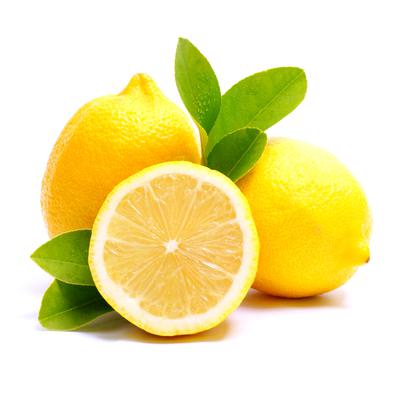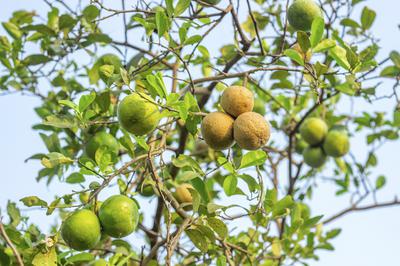VANILLA BEANS | SOYBEAN OIL | SOYMEAL & CAKE | COCOA BEANS | COFFEE BEANS
How to grow LEMON FRUITS in Uganda

Lemons in Uganda
Lemon (Scientific name: Citrus limon) is a species of small evergreen tree in the flowering plant family Rutaceae.
These fruits have been grown in Uganda since 1929 at the time when different citrus plants were introduced to the country.
The tree is believed to be native to subtropical and tropical regions of the Asian continent the lemons are grown for their acidic fruits.
Locally known as “nimawa”, and the fruit is used to make juices, and its cut wedges used to garnish different dishes in the kitchen.
Common Lemon varieties in Uganda
Some of the sorted varieties on market include - Eureka ,Eureka seedless, Lisbon, Limoneira, Genoa, Fino, Verna, Meyer, and Villafranca.
Soil requirements for growing Lemons
Lemons can be grown in a wide range of soils provided they are well drained , fertile and well aerated soils with a pH of between 6.0 to 7.0 is ideal.
How to propagate Lemons on your farm
Lemon can be propagated by seeds or vegetatively by cuttings, budding or grafting; however in commercial planting grafted or budded seedlings are most preferred planting material.
Contact us here to buy Lemons and Lemon Seedlings in Uganda
How to plant Lemons in Uganda
To prepare for planting, secure disease free seedlings from a commercial nursery.
Dig up holes (60x60x60) cm with a spacing of (3x3x3) m. Mix the top soil with 2 spades full’s of compost or kraal manure and 250g of superphosphate.
If you're planning to set up an orchard, I would advise that you plant at the onset of rains. However if it’s an ornamental plant in the compound, you can plant any time as this can be watered easily.
To plant remove the polybag sleeves and place seedlings in the center of the dug holes.
Then cover with top soil first and firm the soil around the seedling.
The covered soil should be up to the original level of the nursery sleeve but make sure that the graft joint area is kept well above the ground to avoid infection.
A stake can be put a alongside the seedling to which the seedling is tied to keep it erect.
Water the seedling way up to fruiting with the weather put in to consideration.
Also weed, as like any other plant oranges don’t do well with competing plants.
Watch out for pests and diseases like the leaf miner, citrus root nematodes, citrus psyllid.
Contact us here to buy Lemons and Lemon Seedlings in Uganda
How to best to harvest Lemon fruits
Budded or grafted plants start producing fruits at about 2-3 years from planting, and production will increase as the tree grows.
Lemons are ready for harvesting when the fruits change color from natural green to slightly yellowish color.
To harvest, clip or pull the fruit gently from the tree using a basket to collect.
About the Uses and Market for Lemons
Starting from your home, to farmer markets, lemons do have a permanent market on stall, super market, moving curt’s, and even hawkers in Uganda.
Lemon juice, rind, and peel are used in a wide variety of foods and drinks. The whole lemon is used to make marmalade, lemon curd and lemon liqueur.
Lemon slices and lemon rind are used as a garnish for food and drinks.
Lemon zest, the grated outer rind of the fruit, is used to add flavor to baked goods, puddings, rice, and other dishes.
Juice - Lemon juice is used to make lemonade, soft drinks, and cocktails. It is used in marinades for fish, where its acid neutralizes amines in fish by converting them into nonvolatile ammonium salts, and meat, where the acid partially hydrolyzes tough collagen fibers, tenderizing the meat, but the low pH denatures the proteins, causing them to dry out when cooked. Lemon juice is frequently used in the United Kingdom to add to pancakes, especially on Shrove Tuesday.
Lemon juice is also used as a short-term preservative on certain foods that tend to oxidize and turn brown after being sliced (enzymatic browning), such as apples, bananas, and avocados, where its acid denatures the enzymes.
Peel - In Morocco, lemons are preserved in jars or barrels of salt. The salt penetrates the peel and rind, softening them, and curing them so that they last almost indefinitely. The preserved lemon is used in a wide variety of dishes. Preserved lemons can also be found in Sicilian, Italian, Greek, and French dishes.
Leaves - The leaves of the lemon tree are used to make a tea and for preparing cooked meats and seafoods.
Lemons were the primary commercial source of citric acid before the development of fermentation-based processes.
Contact us here to buy Lemons and Lemon Seedlings in Uganda
Quick tips for planting Lemon in Africa
- Open up space meant for planting clearing all barriers.
- Dig pits (60 x 60 x 60) cm in size with a spacing of 3x3 m.
- Mix the top soils you removed with compost and then put it back to the pit half of it.
- Remove the polybag sleeve from the seedling root ball, and then carefully loosen the root area.
- Plant the seedling plants in the center of the pits and stake it.
- Water the seedling before and immediately after plating.
- Have a weeding, spraying, and fertilizing routine.
- Harvest when the lemons are ready.
Contact us here to buy Lemons and Lemon Seedlings in Uganda
Join in and write your own page! It's easy to do. How? Simply click here to return to Plants Guide.
If you haven't yet found what you were looking for or you need detailed information about the subject matter on this page then... feel free to ask our business travel consultants. |







